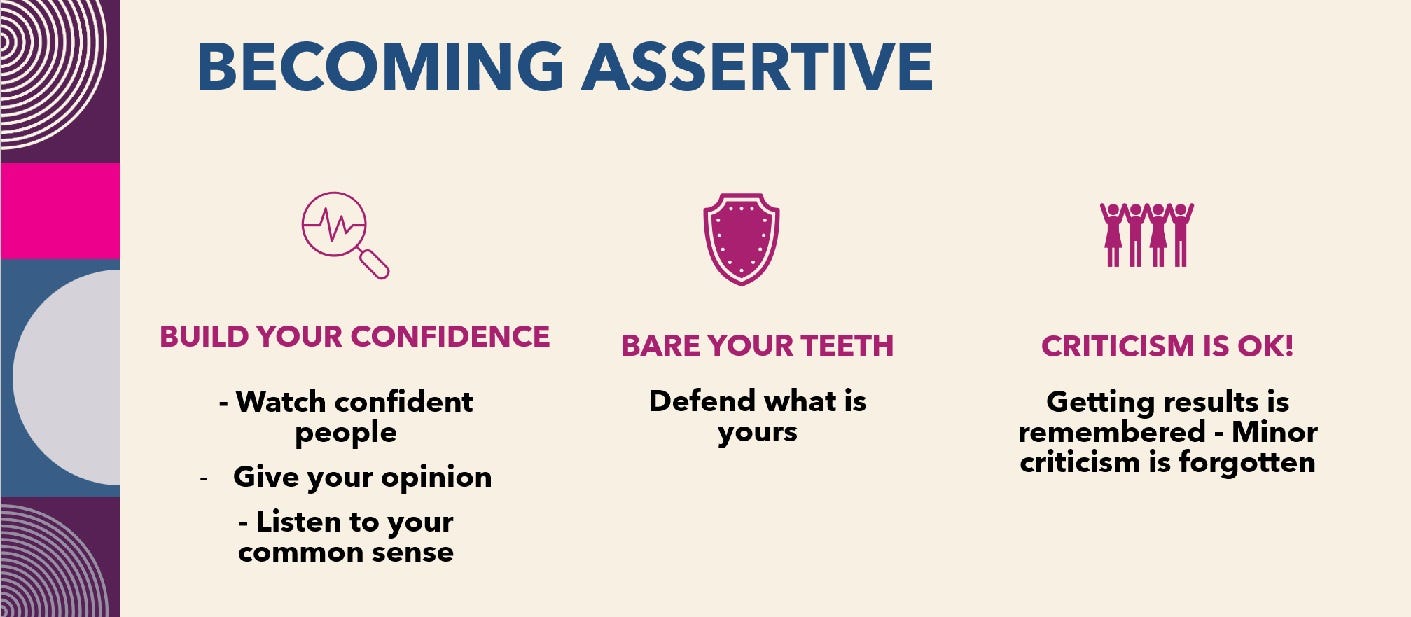Do your co-workers know your position on sensitive topics? Have you voiced an opposite opinion in a meeting? If not, you are missing a chance to be assertive. In your push to be liked by everyone, you could be working too hard on consensus instead of leading your team. Let's discuss how to be assertive without enemies.
First Step: Prepare to Be Assertive
For many, it is difficult to muster up enough confidence to be assertive. You feel like you are faking bluster or an imposter. Some ways to build your confidence:
Think of a confident person you respect - what does this person do to project confidence? Some things you might notice are:
The person knows a lot
The person is opinionated on key topics
The person has multiple relationships across the organization
Start small by giving your opinion and gauging the reaction. For example:
Another product manager explains a new concept that doesn't make sense - ask for clarification
Your product architect feels the new feature doesn't need a demo - you ask enough questions to convince her to schedule the demo
You have a high-spending customer that wants customization that no other customer needs - you meet with the customer and define a small change that is useful for all customers
Let your common sense step in. If you are confused by something, then get clarification. You are not the only one confused and the rest of the team appreciates your drive for clarity.
Second Step: Defend What is Yours
You have a set of objectives that you are driving to hit. However, sometimes your product team tries to change the product direction. And the change of approach could be valid. But you don't want to change the direction on a whim. This is a case where you need to defend what is yours. As the product leader, you need to understand the reasons to change direction and the consequences of changing direction. Even if very powerful team members want to change direction, your job is to lead the team to a well-thought-out and documented change.
Defending your product strategy and leading the change is being assertive. Baring your teeth and stepping in to lead is what the team needs. You own the product strategy and you decide how to lead the team to a new strategy.
Even if you feel powerless, simple documentation of your point of view about a change and the consequences is a defense of your strategy. Defending what is yours is a great step to being assertive!
Third Step: Don't Be Afraid of Criticism
Being afraid of a negative reaction is a big hold-up to being assertive. When you are afraid of the skeptics in your organization, you don't have the confidence to give your point of view. The way to get over your lack of confidence is to focus on results. If you get the result you want, then no one cares if you got some minor criticism along the way.
For example, the chief architect on your software product feels customers need more education on the product to be able to control the User Interface (UI) properly. A new large customer reports that they are delaying more users from using your product because it is too hard to use the UI. You need to escalate this issue before users stop being added and your revenue growth plateaus. You record a session with the customer showing the difficulty in adding new users and take it to the head of engineering. The head of engineering leads changes in the software so new users are added in less time. Your subscriber numbers grow along with your product revenue.
It was scary to escalate over your architect by bringing the customer issue to the head of engineering. But the end result is revenue growth and a better customer experience. After attempting to fix the UI problem with the architect and then going assertive as a second step preserves your relationship with the architect.
Conclusion
Being assertive without making enemies is a skill you can learn by:
Building your confidence
Defending your position
Getting results for the team
Being assertive and leading the team to results pays off much more than being passive.
Interesting Links
15 ways to use storytelling Storytelling is a graceful path to becoming assertive. This article has suggestions to use storytelling to hone your leadership skills.
EQ and assertiveness Additional perspective on being assertive and preserving your values.
4 leadership types Fixers, artists, builders, and strategists - Applying different leadership styles to different situations





Thanks, Amy. Becoming more assertive is one of my new year's resolutions, so this gave me a lot to think about.